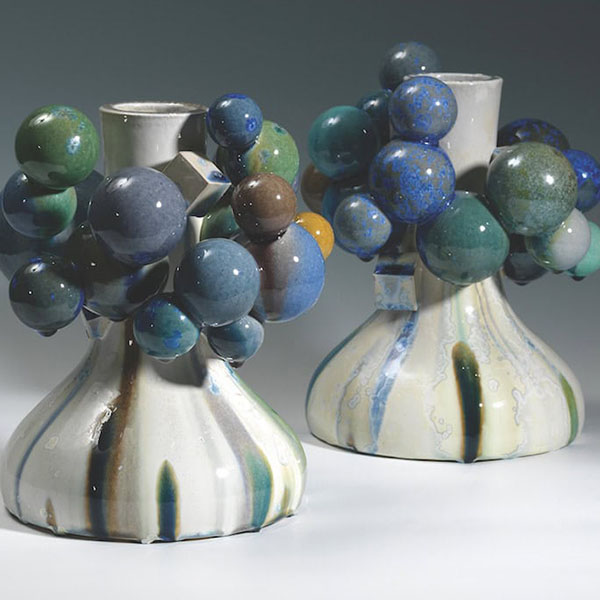By: Juliet Obeng Ansah
When you hear the word ceramics, what comes to mind? Perhaps clay pots, vases, or the humble bowl sitting on your kitchen shelf. But what if we told you that ceramics — a material with roots deep in human history — could also hold the key to a greener, more sustainable future for Africa’s cities?
For centuries, clay has shaped civilizations — literally. From the earliest earthen pots used to store grain and water, to the sturdy mud houses still dotting African landscapes, ceramics have been a quiet yet constant companion in humanity’s story of innovation. But today, the ancient art of clay is being reimagined through the lens of modern science, driving a new wave of eco-friendly architecture and sustainable construction across the continent.
A Legacy Baked in Fire
Archaeologists will tell you that ceramics are among the oldest human-made materials ever discovered. Excavations across the world — from the Paleolithic Venus figurines of Dolní Věstonice to ancient African pottery — reveal how early humans mastered the science of shaping earth and fire to meet their needs. These early “baked clays” were used to build homes, craft tools, and create vessels that preserved life’s essentials: food and water.
As scholar Philip Rawson once wrote, ceramics are “the unique result of the interweaving of materials, human actions, and symbols.” They represent both practical survival and cultural expression — a perfect blend of science and soul.
Clay: The Ancient Answer to Modern Climate Challenges
Fast forward to today, and clay’s humble versatility is finding new relevance in Africa’s green building movement. Researchers like M.Y. Muntari and A.O. Windapo (2021) highlight how clay remains one of the most energy-efficient and climate-friendly materials for construction. Unlike concrete or steel, which require vast amounts of energy to produce, clay structures naturally regulate indoor temperature — keeping homes warm in cold months and cool in the heat.
“Clay buildings breathe,” says Windapo. “They help stabilize temperature and humidity, reducing the need for artificial heating and cooling.” That means lower energy consumption, smaller carbon footprints, and healthier living spaces.
With proper care, clay-based homes and structures can last well over a century — a testament to both their durability and sustainability.
Building the Future, One Brick at a Time
In construction, clay’s role extends far beyond simple bricks. From roofing tiles to floor slabs and decorative facades, clay-based materials offer acoustic insulation, fire resistance, and remarkable structural integrity. Even more fascinating is clay’s natural ability to absorb and release moisture, creating balanced indoor climates that promote health and comfort.
Modern architects are also rediscovering clay’s aesthetic charm. By adding color pigments or natural additives, they can create vibrant, textured finishes that are both functional and beautiful — a perfect marriage of art and engineering.
Sustainability at the Core
Of course, like any natural resource, clay must be managed responsibly. Large-scale excavation can damage ecosystems, cause soil erosion, and disrupt animal habitats. Scientists such as Milica Vasić et al. (2025) are calling for sustainable extraction methods and innovative recycling strategies — ensuring that clay remains an ally, not an adversary, in the fight against environmental degradation.
Fortunately, Africa has a head start. Traditional building practices, rooted in harmony with nature, already emphasize local sourcing, minimal waste, and community-based craftsmanship — all key principles of green building.
A Call to Rediscover Earth’s Wisdom
As Africa’s cities expand and the demand for affordable housing grows, the answer might just lie beneath our feet. Clay — abundant, affordable, and endlessly adaptable — offers a blueprint for sustainable development rooted in indigenous knowledge and modern innovation.
The science of clay is not just about ancient pottery or decorative ceramics. It’s a story of resilience, resourcefulness, and rebirth — proof that sometimes, the most advanced solutions come from the oldest materials on Earth.
So the next time you see a clay pot, a mud house, or a ceramic tile, remember: you’re looking at one of humanity’s earliest technologies — and perhaps, the future of green living in Africa.
References:
Rawson, P. (1984). Ceramics. University of Pennsylvania Press.
Degryse, P. & Shortland, A.J. (2019). Ceramics. In Archaeological Science: An Introduction. Cambridge University Press.
Vasić, M. et al. (2025). Clays in Transition: Addressing Resource Challenges and Sustainable Innovations in the Construction Sector. Science Progress, 108(4).
Muntari, M.Y. & Windapo, A.O. (2021). Clay as Sustainable Building Material and its Benefits for Protection in the Built Environment. IOP Conf. Ser.: Mater. Sci. Eng. 1144.
Amiran, R. (1970). Ancient Pottery of the Holy Land. Rutgers University Press.
Vandiver, P.B. et al. (1989). The Origins of Ceramic Technology at Dolni Věstonice. Science, 246.





